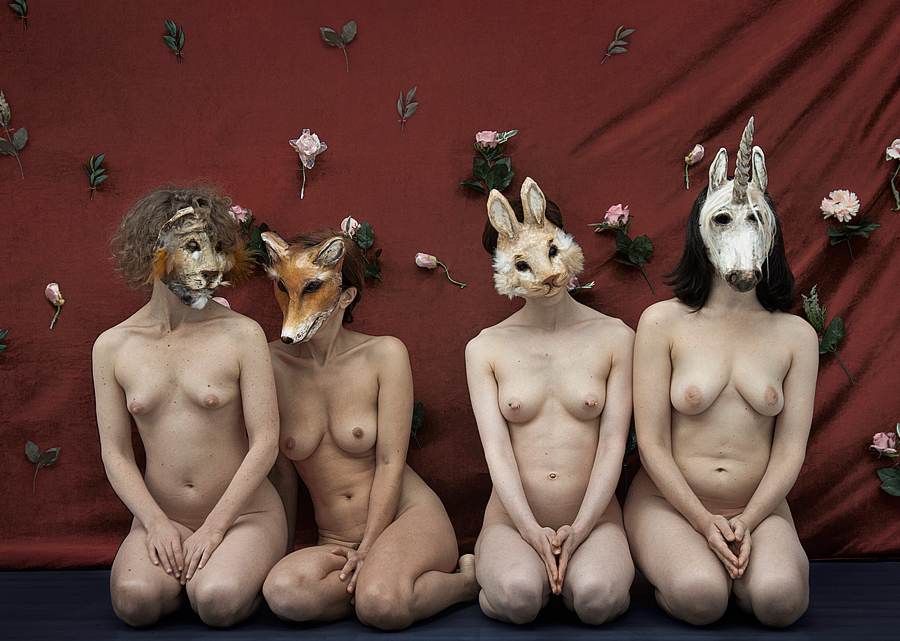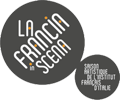A MON SEUL DÉSIR
1 ottobre h 21.00 | Fabbricone
in collaborazione col network Finestate Festival - progetto speciale in prima nazionale
in collaboration with the network Finestate Festival - special project italian première
biglietto / ticket 10,00 € (rid. 7,00 €)
durata / time 45’
spettacolo in lingua francese con sopratitoli in italiano / performance in French with Italian surtitles

ideazione e narrazione / conception and narration Gaëlle Bourges
danza / dance Carla Bottiglieri, Gaëlle Bourges, Agnès Butet and Alice Roland
con / with Gaëlle Bourges, Agnès Butet, Marianne Chargois and Alice Roland
e l’apparizione di 34 volontari nel bestiario finale / and the appearance of 34 volonteers in the final bestiary
musica / music XTRONIK e/and Erwan Keravec
disegno luci / lighting design Abigail Fowler e/and Ludovic Rivière
costumi / costume design Cédrick Debeuf, assistito da / assisted by Louise Duroure
maschere / masks Krista Argale
alterazioni alle maschere del coniglio / alterations to the rabbit masks Corinne Blis
master sound, direttore di palco / sound master, stage manager Stéphane Monteiro
amministratore, produttore, manager / administrator, producer, manager Raphaël Saubole
produttori associate / associate producer Os
coproduzione / co-production Accueils-studio program: Ballet du Nord/ CCN de Roubaix Nord-Pas de Calais diretto da/ directed by Olivier Dubois; CCN de Tours/directed by Thomas Lebrun; Festival Rayons Frais/Tours; Ménagerie de Verre
con il support di / with the support of French Ministry of culture and communication/DRAC Île-de-France within the context of an "aide au projet" grant; ADAMI, performing artists society; Vivat, scène conventionnée d’Armentières within the context of its residencies policy.
Essere una “vergine” nella cultura europea (e non solo) è una caratteristica esclusivamente femminile, risalente dalla Vergine Maria; o meglio: la verginità delle donne è sempre stata maggiormente considerata rispetto a quella degli uomini. È evidente che nei secoli l’immaginario ha sempre condizionato la nostra immaginazione con la deflorazione delle donne o, al contrario, con l’assenza di deflorazione (l’infinita catena di Maria).
E dal momento che le nostre rappresentazioni sono state a lungo intrecciate con ciò, abbiamo deciso di allentare l’ordito e la trama di una famosa serie di arazzi, conosciuta come La dama e l’unicorno, realizzata alla fine del quindicesimo secolo e ora esibita nel museo del Medioevo a Parigi. Attraverso i suoi sei singoli pannelli, l’arazzo mostra una giovane donna riccamente abbigliata, indaffarata in varie azioni, e un tranquillo e vigile unicorno accanto a lei. Però l’unicorno è un simbolo di castità e non può restare pacifico senza che la giovane donna cui sta dietro sia casta, infatti. Il corno dell’unicorno è anche “una sorta di chiaro complesso fallico”, come Salvador Dalì ironicamente diceva, un ovvio segno erotico. Dunque qual è l’oggetto del desiderio qui? La verginità o la vergine? Entrambi? E poi, la coppia giovane donna /unicorno rappresenta la castità o piuttosto un’allegoria del desiderio carnale, tanto più incontenibile quanto lo (storico) desiderio di aprire una terra vergine?
Being a "virgin" in the European culture (but not only in it) is an exclusive feature of women – owing to the Virgin Mary; or rather: women's virginity has always been a greater concern than men's one. It is clear as one looks into the centuries-old imagery that is still covering our imaginations with women's deflorations or, on the contrary, absence of deflorations (endless chain of Marys).
And since our representations have long been woven with this, we decided to loosen the warp and woof of a famous set of tapestries, known as La Dame à la licorne (The Lady and the unicorn), crafted in the late 15th century and now exhibited at the museum of the Middle Ages in Paris. Through its six separate panels, the hanging shows a richly attired young lady, busying with various actions, a quiet and watchful unicorn standing by her side. However the unicorn is a symbol of chastity and cannot remain peaceful unless the young girl it stands beside is chaste, in fact. Yet the unicorn’s horn is also “a kind of sharp phallic complex", as Salvador Dalì ironically puts it, at least an obviously erotic sign. Then what is the object of desire here? The virginity or the virgin? Both? Then does the couple young girl/unicorn represent chastity or rather an allegory of carnal desire, all the more irrepressible as behind it lies the (historical) eagerness to open up a virgin land?




